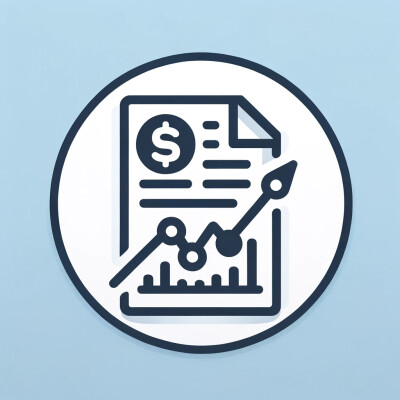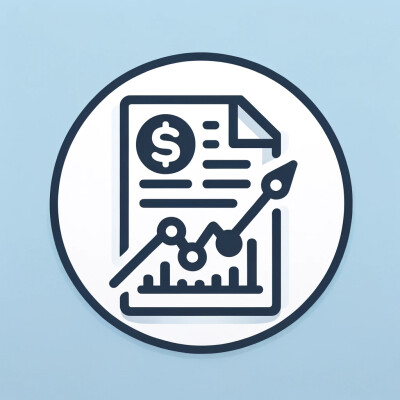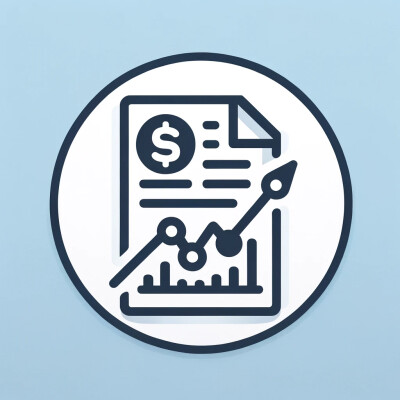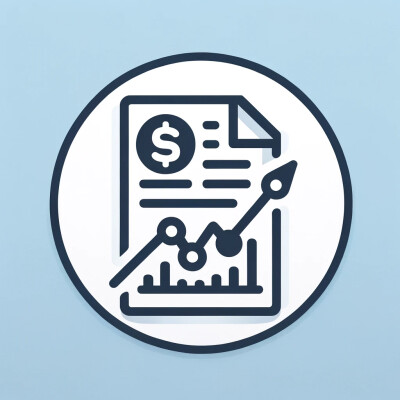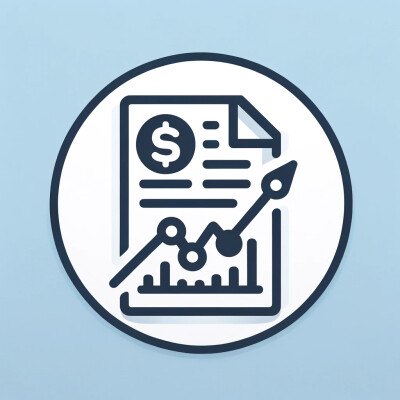- Speaker #0
Hello. Welcome back to Papers with Backtest podcast. Today we dive into another Algo trading research paper.
- Speaker #1
Indeed. And this one's quite interesting. It's called Piety and Profit, Stock Market Anomaly During the Muslim Holy Month.
- Speaker #0
Right. By Bielkowski, Edabari, and Wisniewski. And the headline finding is pretty attention grabbing, isn't it?
- Speaker #1
It really is. They looked at stock returns during Ramadan in 14 predominantly Muslim countries. over a decent period 1989 to 2007.
- Speaker #0
And found returns were significantly higher.
- Speaker #1
Significantly. Almost nine times higher during Ramadan compared to the rest of the year. And get this, volatility was lower.
- Speaker #0
Higher returns and lower risk during that specific time. Okay, so for you listening, this deep dive is really a shortcut to understanding this, well, surprising market pattern and what the researchers actually found.
- Speaker #1
Exactly. Is it a quirk? An edge? Let's dig in.
- Speaker #0
Let's get right into the trading rules and the backtest results they presented. They talk about this Ramadan effect. What exactly is that?
- Speaker #1
So it's basically this observation, which they found to be statistically significant, that during the month of Ramadan, stock returns in these markets tended to be much higher and price swings, you know, volatility were noticeably lower.
- Speaker #0
Not just a feeling, they actually measured it. Oh yeah,
- Speaker #1
they put numbers on it, big numbers. Using MSCI indices denominated in U.S. dollars, The average annualized return during Ramadan was 38.09%. 38%
- Speaker #0
and compare that to the rest of the year.
- Speaker #1
Just 4.32% annualized for the other months. So like we said, nearly nine times the return. It's a massive gap.
- Speaker #0
That really is striking. And the volatility part, you said that went down.
- Speaker #1
Yeah, significantly lower volatility in almost all the countries they studied, which, you know, usually you associate higher potential returns with higher risk, higher volatility.
- Speaker #0
Right. That's the standard finance tradeoff. So this goes against the grain.
- Speaker #1
It does. Higher returns, calmer markets. It's quite the anomaly.
- Speaker #0
Did they see any change in like how much trading was happening? Did volume spike or dip?
- Speaker #1
Interestingly, no. They looked at trading volume and found no discernible change during Ramadan compared to the rest of the year. So it doesn't seem to be driven by just more or less people trading. Hmm.
- Speaker #0
OK. The paper also mentions using event study analysis. Can you maybe unpack that a bit for us? What did that show? Sure.
- Speaker #1
An event study tries to isolate the impact of a specific event here. It's Ramadan starting on stock prices. It filters out the normal everyday market movements to see if there's an extra return or abnormal return linked just to the event.
- Speaker #0
So they're trying to see if Ramadan itself causes a bump?
- Speaker #1
Precisely. They used a couple of models like a constant mean return model and a market model as benchmarks.
- Speaker #0
And what did they find? Were there these abnormal returns?
- Speaker #1
Yes, definitely. They measured something called cumulative abnormal returns or CARS. Think of it as the total extra return accumulated during the Ramadan period. Okay. During the actual, say, 20 or 21 trading days of Ramadan, the CARS ranged from about 2.5% to 3.1%.
- Speaker #0
So an extra 2.5% to 3% just from being in that period?
- Speaker #1
Yeah, on top of whatever the market was doing anyway. And what's even more interesting, if they extended the window slightly, including days just before and after Ramadan.
- Speaker #0
It got bigger.
- Speaker #1
It did. the Qataris could go as high as nearly 5%. So the effect seems concentrated around the Ramadan period itself.
- Speaker #0
Almost 5% extra return in a short window. Was this statistically solid though, or just a fluke in the data?
- Speaker #1
They ran the tests, t-tests, sign tests, and the results were strong. P-values were generally well below 0.05, often even below 0.01.
- Speaker #0
Which means it's very unlikely these results happened by random chance.
- Speaker #1
Exactly. It strongly suggests this Ramadan effect is, you know, a genuine pattern in the data they looked at.
- Speaker #0
OK, but whenever you see something like this, you have to ask, could it be something else? You know, some other known market pattern just overlapping. Did they check for that?
- Speaker #1
Absolutely. Crucial point. They did several robustness checks. For example, they made sure the results held up even when using the official Makamun sighting to determine the exact dates of Ramadan each year.
- Speaker #0
Right. Because the start date can vary slightly.
- Speaker #1
Yep. But the effect was consistent regardless. Okay.
- Speaker #0
What else?
- Speaker #1
They also wondered if maybe the length of the daily fast mattered. Like maybe longer fasting days had a different impact.
- Speaker #0
Interesting thought.
- Speaker #1
But nope. They didn't find any significant link there either. The cars didn't seem to correlate with how long the fasting day was in a particular year or location.
- Speaker #0
So not directly tied to the physical act of fasting duration itself. Did they try different data?
- Speaker #1
They did. They cross-referenced using S&P indices for eight countries. Instead of the MSCI ones. And guess what?
- Speaker #0
Same effect.
- Speaker #1
Pretty much. Annualized returns during Ramadan were about 40.8% versus 11.9% the rest of the year. Still a huge difference and statistically significant again. The t-statistic was 3.65, which is quite high.
- Speaker #0
That strengthens the case quite a bit. Now, what about those classic calendar anomalies like January effect or sell in May?
- Speaker #1
Good question. They tackled those directly. For the January effect, they re-ran the analysis. but excluded any Ramadan periods that happened to start in January. The Ramadan effect was still there. Annualized returns were still high, around 30.4% during those non-January Ramadans versus the rest of the year.
- Speaker #0
So it's not just January wearing a disguise. What about sell in May, the Halloween effect?
- Speaker #1
Right. The idea that returns are better from November to April, they tested that too. They excluded Ramadans falling in that no-vapory period.
- Speaker #0
And did the effect disappear then?
- Speaker #1
Quite the opposite. It actually got stronger. The annualized return during Ramadans outside that no-vapory window jumped to over 51%. with a t-stat of 4.44.
- Speaker #0
Wow. So it seems very distinct from those other calendar patterns.
- Speaker #1
It really does. They even went further and used multivariate regressions. That lets you control for several things at once.
- Speaker #0
Like Monday effect, January Halloween, all together.
- Speaker #1
Exactly. And even after accounting for all those potential influences simultaneously, the Ramadan variable was still statistically significant. It seemed to be its own thing.
- Speaker #0
Okay, that's pretty thorough. They also compared countries based on Muslim population percentage, Yes.
- Speaker #1
Using something called Seemingly unrelated regression, or SUR. It's a technique for comparing groups.
- Speaker #0
What did that show?
- Speaker #1
It showed the Ramadan effect was strongest, most pronounced, in the countries where the population was majority Muslim.
- Speaker #0
Which makes intuitive sense if the effect is linked somehow to the shared cultural or religious experience of Ramadan.
- Speaker #1
Precisely. It seems tied to that specific context.
- Speaker #0
And did this effect fade away over time? Like maybe markets got more efficient towards the end of their study period?
- Speaker #1
That's another key check. They looked at the later subperiod, 2001 to 2007, and the anomaly was still present. No clear sign that it was disappearing due to increased market efficiency, at least up to 2007.
- Speaker #0
One last check, could it have been currency movements? Maybe the local currencies were just strengthening against the dollar during Ramadan?
- Speaker #1
They checked that too, by looking at returns denominated in local currency.
- Speaker #0
And the effect was still there?
- Speaker #1
Yep. The results held up, confirming it was mainly driven by the actual stock price changes. not just exchange rate fluctuations.
- Speaker #0
Okay. So pulling all this research together, what did the paper suggest in terms of, well, potential trading strategies? If someone listening is intrigued, what are the implications?
- Speaker #1
Well, the paper floats the idea, based on these findings, that an investor looking for short-term profits could potentially buy stocks in these markets just before Ramadan starts.
- Speaker #0
Go long.
- Speaker #1
Right. Establish long positions. and then sell them near the end of Ramadan or maybe shortly after the Eid al-Fitr festival that marks the end.
- Speaker #0
Seems straightforward enough. Any catches?
- Speaker #1
The main caveat they mention is transaction costs, obviously. Broker fees, potential slippage. That always eats into profits. But they do suggest that the size of the abnormal returns they found, that 2.5% to 5% extra kick, might be large enough to potentially overcome those costs.
- Speaker #0
Potentially. And was there any other approach mentioned?
- Speaker #1
They also noted a kind of more passive strategy. Basically, if you were planning to buy or sell in those markets anyway, you might simply adjust your timing slightly to align better with this Ramadan pattern, maybe delay sales until after Ramadan or bring purchases forward.
- Speaker #0
Interesting. So less active trading, more timing adjustment. It really makes you think about how factors beyond pure economics like culture and religion might ripple through financial markets. Are these exploitable anomalies or just fascinating quirks of human behavior reflected in prices? Something definitely to mull over.
- Speaker #1
Absolutely. It challenges the idea of purely rational markets, that's for sure.
- Speaker #0
Thank you for tuning in to Papers with Backtests podcast. We hope today's episode gave you useful insights. Join us next time as we break down more research. And for more papers and backtests, find us at https.paperswithbacktests.com. Happy trading.

